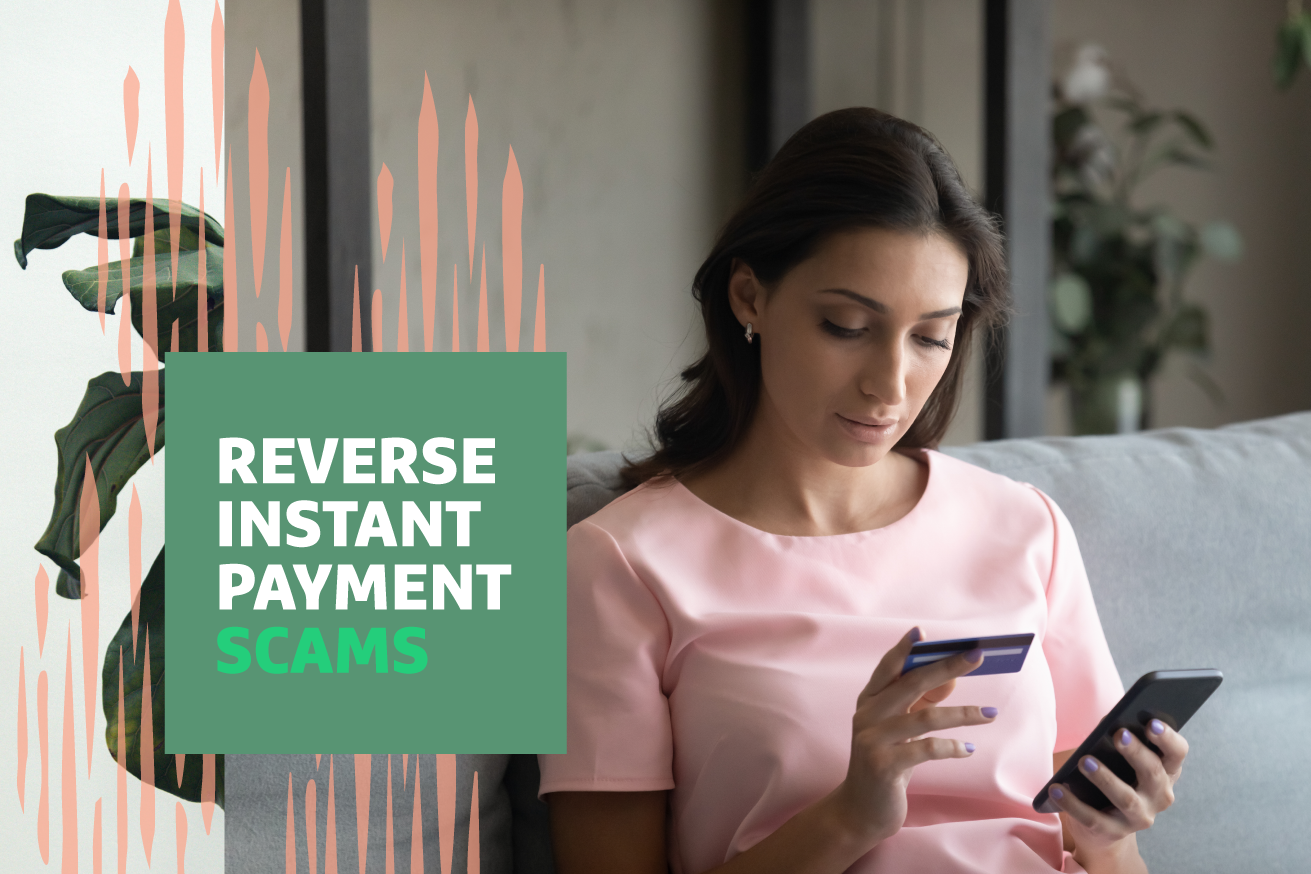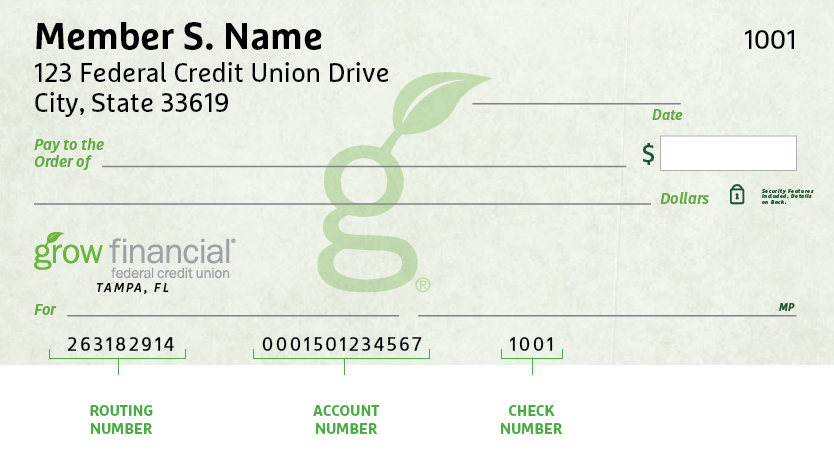- Personal
- Membership
- Membership
- Rates & Fees
- Checking
- Checking
- Personal Loans
- Personal Loans
- Wealth Management
- Investment Services
- Financial Advisors
- Resource Center
- Business

August 10, 2022
Scam Alert: The FBI Warns of Reverse Instant Payment Scams
If you’re a person who owns a phone and has a bank account, you’re a potential target for a new scam that the FBI calls a reverse instant payment scam. We want to help you keep your money and personal information safe. Let’s talk about what this scam is and how to avoid it.
What is a reverse instant payment scam?
The basics of a reverse instant payment scam are simple, though the execution is a bit convoluted. Basically, criminals use social engineering to impersonate your financial institution, gain your trust, then get you to send them money without realizing what you’re doing. Here’s how the scam goes:
You receive a text message with what appears to be a fraud alert from your financial institution. It may say something like, “[Your Financial Institution] Fraud Alert – Did you send an instant payment for $6,000? Reply Yes or No.” If you reply No, you’ll receive another text with something like, “Our fraud specialist will contact you soon.” They’ll call you from what appears to be your financial institution at a 1-800 number and sometimes, they’ll call you even if you ignored the initial text message.
The caller will ask you to verify your personal information to establish credibility. They may already know some of your personal information like bank account numbers, the last four digits of your Social Security number or other data. This convinces you that you’re speaking with your actual financial institution. The caller will then explain that a fraudulent payment was made on your account and instruct you how to initiate another instant payment transaction to “cancel” or “reverse” the fraud attempt. But if you follow their instructions, you’re not actually sending the money to yourself like they claim: you’re sending it to the scammer’s bank account.
How to avoid reverse instant payment scams
Since we all rely on emails, phone calls and text messages for our communication these days, it can be easy to trust a text message or email that appears to come from a trusted source. To help keep yourself safe from scams, the FBI recommends the following precautions:
- Be cautious of unsolicited requests to verify account information.
- If you get a text or email about possible fraud on your account, do not respond directly. Instead, contact your financial institution directly through the official phone number posted on their website, not what’s listed in the message.
- Enable Multifactor Authentication (MFA) for all your accounts, and do not share MFA codes or passwords to anyone over the phone. Grow Financial will never call you and ask you to read a verification code over the phone.
- Know that financial institutions will never ask you to transfer funds between accounts to help prevent or reverse fraud.
- Be skeptical of callers that provide your personal information, such as Social Security number and past addresses, as proof of their legitimacy. With several large-scale data breaches in the past decade, criminals have access to enormous amounts of personal data to assist them with committing fraud and other scams.
If you believe you’ve been a victim of a cybercrime, including reverse instant payment scams, report it immediately to the FBI’s Internet Crime Complaint Center (IC3) for the best chance of recovering your stolen funds. For more about avoiding scams and keeping your accounts safe, visit our Protect Yourself page.
Posted In:
Lost or Stolen Card?
We’re here to help. If your card has been misplaced or stolen, we’ll act quickly to protect your account. You can report a missing card in the following ways:
Online and Mobile Banking
Log in and follow these three easy steps:
- From the menu, select Tools
- Select Card Manager
- Report your card as Lost or Stolen*
By phone or at a Grow store
Call 800.839.6328 to speak to a team member or let us know in person at any Grow store.Notice: Taking these steps will immediately cancel your card to prevent unauthorized transactions. If you find your card later after reporting it lost or stolen, it cannot be reactivated.
*The selected card will be canceled and removed from Manage Cards when it is reported as lost. Once your new card has been issued, it will be available in Manage Cards. The replacement card will have a new card number. Your replacement card will be sent to the mailing address on your account, and you should receive it within 7 to 10 business days.
How to Find Your Routing & Account Numbers
When you make a payment online, by phone or on a mobile device, you may be asked for our routing number and your checking account number. Credit unions and banks use these numbers to identify accounts and make sure money gets where it’s supposed to be. You’ll also need to provide your routing and checking account numbers for:
- Direct deposits
- Electronic checks
- Military allotments
- Wire transfers
Where to Find Your Routing & Checking Account Numbers
Your personal checks include both our routing number and your account number, as shown on the Grow check example below.

Where to Find Your Checking Account Number in Grow Online and Mobile Banking
If you don’t have a physical check on hand, you can also locate your Checking Account Number for Electronic Transactions in Grow Online and Mobile Banking.*
Here’s how to find it:
- In the Grow Mobile Banking app, select your checking account, then tap Show Details in the top right corner.
- In Grow Online Banking, select your checking account, then click Account Details.
Don’t have a Grow check or Online Banking? No worries.
Visit any Grow store or call us and ask for a Direct Deposit Form. It lists both your routing number and checking account number.
Making a Loan Payment
When it comes to making payments, we try to make it as painless as possible to pay your loan every month. We have several different ways to pay, including convenient online options.
Pay Online
You have two ways to pay online by transferring funds from another bank or credit union.
- Grow Online Banking (Preferred payment method for any loan)
This is the simplest way to pay your loan. You can make one-time payments or set up automatic recurring payments in Grow Online Banking. Once you log in, select “Transfer/Payments” from the menu. If you’re not enrolled in Grow Online Banking yet, you can set up your account in just a few minutes.
Log In
- Debit Card or ACH (Available for auto, personal loans and HELOCs)
Note: ACH and debit card payments are not available for credit cards or most mortgages, except HELOCs.
We accept ACH payments with no additional fees, consumer Mastercard® and Visa® debit cards with a convenience fee of $4.95, or commercial Mastercard® and Visa® debit cards with a convenience fee of 2.95% of the payment amount. To get started with an online ACH or debit card payment, select Pay Now below.
Pay Now
Pay by Mail
You can also pay any Grow loan by check through the mail. Please remember to include your account number and Grow loan number on the check. (For credit card payments, please do not write your 16-digit credit card number on the check, which can cause a delay in processing the payment.)
Address for auto, credit card, personal loan and HELOC payments:
Grow Financial Federal Credit Union
P.O. Box 75466
Chicago, IL 60675-5466Address for personal first or second mortgages and home equity payments:
Grow Financial Federal Credit Union
P.O. Box 11733
Newark, NJ 07101-4733You Are About To Leave GrowFinancial.org
At certain places on this site, there are links to other websites. Grow Financial Federal Credit Union does not endorse, approve, represent, certify or control those external sites. The credit union does not guarantee the accuracy, completeness, efficacy, timeliness or accurate sequencing of the information contained on them. You will not be represented by Grow Financial Federal Credit Union if you enter into a transaction. Privacy and security policies may differ from those practiced by the credit union. Click CONTINUE if you wish to proceed.
